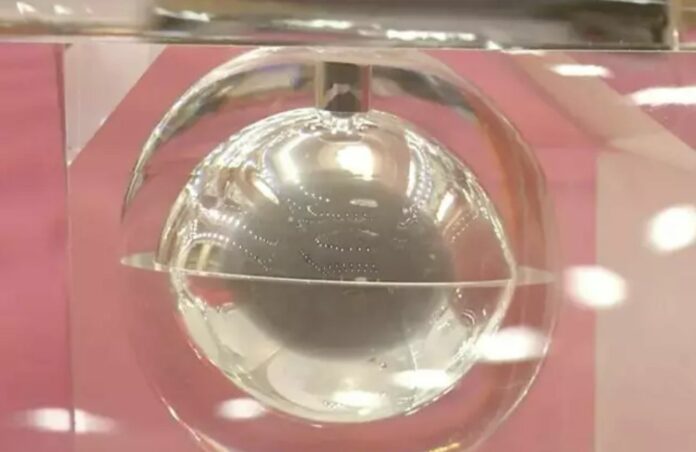China’s National Space Administration (CNSA) and China Atomic Energy Authority (CAEA) jointly announced Friday that researchers studying samples returned from the Moon by China’s Chang’e-5 mission had discovered a new lunar mineral.
This is China’s first new mineral discovery on the Moon, and mankind’s sixth. According to Dong Baotong, deputy director of the CAEA, the latest discovery places China as the third country in the world to have discovered a new mineral on the Moon.
The newly discovered mineral, Changesite-(Y), is a type of clear, colorless columnar crystal. A study team from the Beijing Research Institute of Uranium Geology (BRIUG), a subsidiary of the China National Nuclear Corporation, discovered it through an investigation of lunar basalt particles.
The International Mineralogical Association’s Commission on New Minerals, Nomenclature and Classification has formally recognized Changesite-(Y) as a new mineral.
The discovery is of enormous scientific value to the study of lunar materials, lunar development, and deep space exploration, according to Li Ziying, leader of the research team at BRIUG.
In 2020, China’s Chang’e-5 mission returned samples from the Moon weighing around 1,731 grams, the first lunar samples returned in more than 40 years.
Li claimed that technology advancements and the distinctive environment of the Chang’e-5 probe’s sample location in the northwest corner of Oceanus Procellarum, popularly known as the Ocean of Storms, on the Moon, allowed Chinese scientists to make the new discovery.
This location was chosen because the region is geologically young in comparison to the sample locations in the United States and the Soviet Union.
BRIUG, one of many research institutions involved in lunar sample research, focuses on the study of fission and fusion elements in lunar samples, giving basic data for the study of lunar evolution and the evaluation of lunar resources.
When the study team retrieved the first 50 milligrams of lunar samples for mineralogical analysis in July 2021, they discovered evidence of a new mineral. However, due to the incredibly small size of the lunar soil particles, they were unable to obtain the necessary information to identify the mineral.
The group subsequently submitted an application for the second batch of 15 milligram-plus lunar samples. The researchers eventually selected a pure single-crystal particle that is 10 by 7 by 4 microns in size, or less than a tenth of the typical diameter of human hair, from among more than 140,000 extremely small particles. The researchers decoded its crystal structure and confirmed that it is a new mineral.
Image Credit: Getty
You were reading: China’s Chang’e-5 Mission Has Found A New Mineral On The Moon
